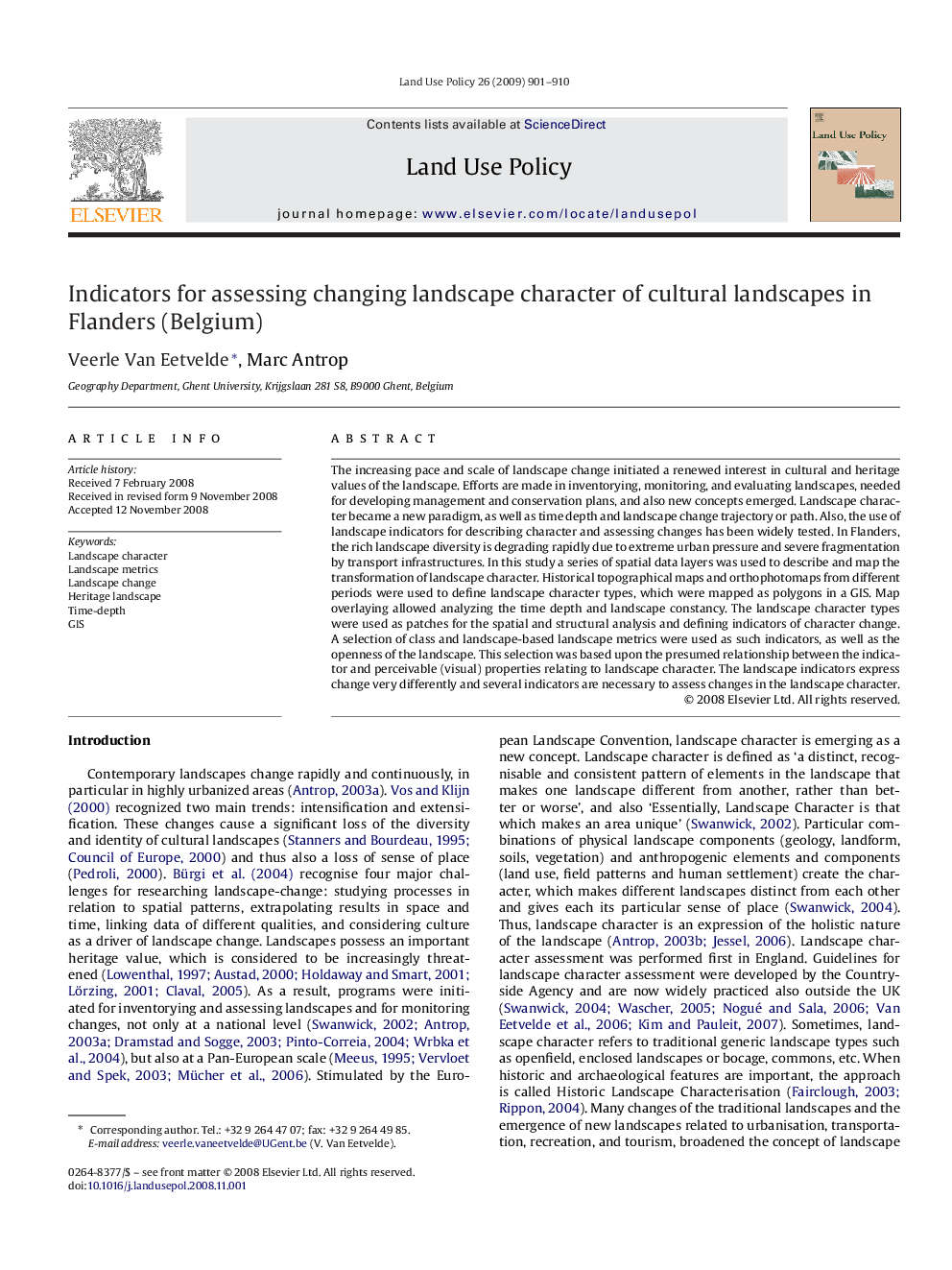| کد مقاله | کد نشریه | سال انتشار | مقاله انگلیسی | نسخه تمام متن |
|---|---|---|---|---|
| 93624 | 160134 | 2009 | 10 صفحه PDF | دانلود رایگان |

The increasing pace and scale of landscape change initiated a renewed interest in cultural and heritage values of the landscape. Efforts are made in inventorying, monitoring, and evaluating landscapes, needed for developing management and conservation plans, and also new concepts emerged. Landscape character became a new paradigm, as well as time depth and landscape change trajectory or path. Also, the use of landscape indicators for describing character and assessing changes has been widely tested. In Flanders, the rich landscape diversity is degrading rapidly due to extreme urban pressure and severe fragmentation by transport infrastructures. In this study a series of spatial data layers was used to describe and map the transformation of landscape character. Historical topographical maps and orthophotomaps from different periods were used to define landscape character types, which were mapped as polygons in a GIS. Map overlaying allowed analyzing the time depth and landscape constancy. The landscape character types were used as patches for the spatial and structural analysis and defining indicators of character change. A selection of class and landscape-based landscape metrics were used as such indicators, as well as the openness of the landscape. This selection was based upon the presumed relationship between the indicator and perceivable (visual) properties relating to landscape character. The landscape indicators express change very differently and several indicators are necessary to assess changes in the landscape character.
Journal: Land Use Policy - Volume 26, Issue 4, October 2009, Pages 901–910